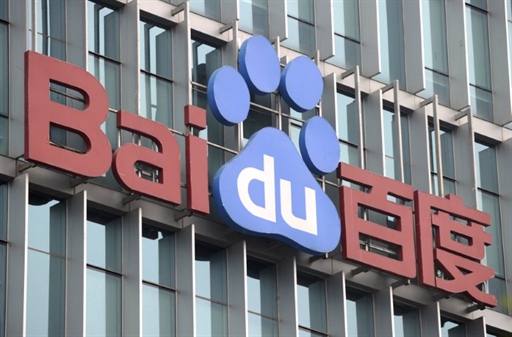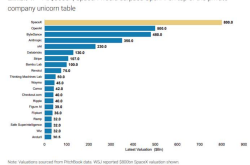Baidu Unveils TizzyAI: An Ad-Free AI Search Engine, Stirring Competition in the Market
![]() 07/18 2025
07/18 2025
![]() 613
613
Following ByteDance's introduction of the intelligent search app "AI Douyin," Baidu has stealthily launched its own AI search application, "TizzyAI." This marks the first time an "ad-free" search engine has been introduced, effectively disrupting the over two-decade-old search business model. This move sets the two tech giants against each other in the AI search market.
Currently, the global search engine market is transitioning from "keyword matching" to "intelligent understanding." In this context, Baidu's strategic intention behind TizzyAI is evident: to maintain technological leadership while addressing the issue of excessive advertising in traditional search engines, thereby enhancing user experience and market competitiveness through differentiated strategies.
So, how will the launch of TizzyAI impact Baidu's performance? Can it distinguish itself in the competitive AI search market?

Can TizzyAI become a new growth engine for Baidu?
Upon experiencing the new product, it's evident that the interface design adheres to the "minimalism" concept—no pop-up interruptions or news feed push notifications. The bottom navigation bar retains only two core entries: "Search" and "Resource Library."
Upon entering "TizzyAI," users are greeted by a prominent product logo and slogan, followed by a search box with scrolling search recommendations from right to left.
In the search box, users can input questions via typing or voice. Additionally, the search box supports switching between automatic mode and deep mode: in automatic mode, the system intelligently recognizes questions and swiftly provides answers; while deep mode emphasizes enhanced reasoning processes for more in-depth analysis.
For instance, in automatic mode, when inputting "places suitable for summer vacations," TizzyAI can provide an answer in about 10 seconds. Unlike deep mode, automatic mode skips the reasoning step and directly presents recommendations for suitable summer vacation spots in 2025. The recommendations are categorized based on geographical factors such as altitude, northern regions, and unique ecosystems. Each vacation spot is accompanied by a detailed analysis of the recommended reasons, as well as a summary of local specialty foods and other information, largely meeting user needs.
Beyond basic intelligent search response functions, TizzyAI's most distinctive feature is its video and short drama resource query service.
By clicking on "Resource Library" in the bottom navigation bar, users can access the video and short drama resource area. The video section includes channels like "Today's Recommendations" and "Selected Playlists": "Today's Recommendations" showcases acclaimed works automatically selected by the platform, while "Selected Playlists" gathers popular series from platforms like Netflix, Douban Movies, iQIYI, Apple TV, and Bilibili. Currently, the video section covers multiple categories, including TV series, movies, variety shows, anime, and documentaries.
However, practical tests reveal that TizzyAI's video resources cannot be played directly. Instead, it adopts an "aggregated redirect" model, essentially integrating playback sources across the entire network through AI.
When clicking on a movie, the system does not directly redirect to the playback interface but enters a search page where AI summarizes some playback links, allowing users to watch the content through these links. Additionally, the end of the search page prompts: "It is recommended to prioritize watching through official channels, comply with relevant laws and regulations, and respect intellectual property rights."
In contrast, the content in the short drama section is more practical, mainly including popular vertical-screen micro-dramas, with update speeds synchronized with mainstream platforms and support for variable speed playback, providing a smooth overall viewing experience.
Red Ocean Breakout: TizzyAI Faces a Protracted Battle
The current AI search market is characterized by a competitive landscape with "one superpower and multiple strong players." Compared to "AI Douyin" under ByteDance, "TizzyAI" offers superior search depth (especially in complex question resolution) but lacks content interest.
Compared to Quark's "Minimalist Search," its AI-generated responses are more intelligent but lack tool-like functions (such as translation and document processing).
Compared to Baidu's own AI search function, the ad-free pure experience is its biggest advantage, but Baidu Baike, Baidu Experience, and other ecological resources have not yet been fully integrated.
Each player's competitive strategy varies. ByteDance, relying on Douyin's vast user base and content ecosystem, emphasizes entertainment and social attributes; Quark follows a "tool + content" route to meet users' one-stop needs; while Baidu TizzyAI has chosen a differentiated path of "technical depth + pure experience."
This diversified competitive landscape fosters industry innovation but also means that any new entrant must find its unique value proposition to establish a foothold.
As one of Baidu's few AI search products, TizzyAI's core competitiveness is clear: it reconstructs the search experience using large models and addresses user pain points through an "ad-free" approach.
It appeals to users seeking efficient information acquisition and disliking interruptions, especially excelling in in-depth analysis and decision-making assistance scenarios. However, issues such as copyright compliance for video resources, functional completeness (e.g., tool-like services), and response speed optimization remain critical thresholds for TizzyAI to transition from "usable" to "user-friendly."
While TizzyAI's video resource aggregation function conveniences users, it also faces severe copyright challenges. Currently, TizzyAI adopts an "aggregated redirect" model, not directly hosting content but integrating playback sources across the entire network through AI technology, an approach that still has gray areas in copyright law.
Although the app prompts users to "prioritize watching through official channels," the compliance of this function still requires close attention to policy trends and potential copyright disputes.
Baidu is clearly aware of this risk and has adopted a cautious attitude in both technical implementation and user prompts. However, in the long run, to sustain development in this field, Baidu may need to formally cooperate with more content platforms and obtain resources through legal authorization.
This can not only avoid legal risks but also improve resource quality and stability, enhancing the user experience. In this regard, Baidu can draw on its experience of forming strategic partnerships to consolidate its market position by establishing cooperative relationships.
Conclusion
From a macro perspective, the launch of TizzyAI is a crucial aspect of Baidu's AI strategy. Its success or failure will test whether Baidu can reconstruct search value in the AI era—shifting from "traffic monetization" to "decision-making empowerment."
Short-term challenges are inevitable, but if Baidu can overcome the bottlenecks of response speed and ecological synergy, it may become the company's second growth curve after intelligent cloud. However, with strong competitors like DeepSeek surrounding it, Baidu's window of opportunity is not generous.






